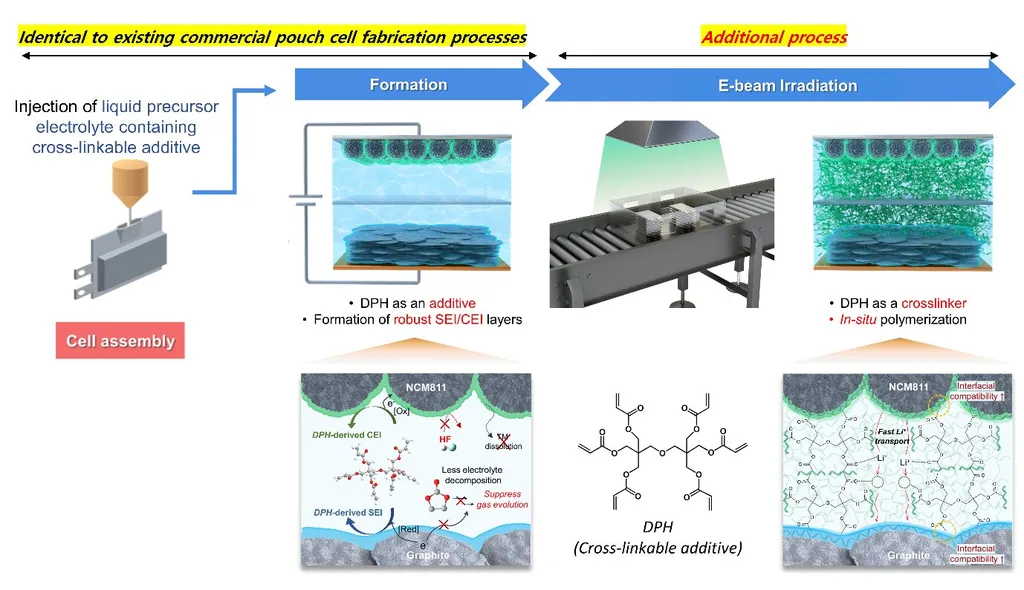In a significant stride towards enhancing the safety and performance of lithium-ion batteries, researchers from the China University of Petroleum-Beijing have developed a novel gel electrolyte that promises high-voltage stability and fire resistance. This innovation, published in the journal *Energy Material Advances* (translated from Chinese), could revolutionize the energy sector by addressing two critical challenges: the flammability of traditional electrolytes and their susceptibility to degradation at high voltages.
The lead author, Shuilai Qiu from the College of Safety and Ocean Engineering, explains, “Conventional polyether-based gel electrolytes have inherent limitations. They decompose at high voltages, limiting the energy density of batteries, and their flammability poses significant safety risks.” To overcome these issues, Qiu and his team employed molecular grafting engineering to incorporate hindered amines as multifunctional additives. These additives act as both radical scavengers and high-voltage film-forming agents, creating a gel electrolyte that is both stable and fire-resistant.
The resulting gel electrolyte, dubbed PTF-GPE, exhibits remarkable properties. It forms a cathode electrolyte interphase layer enriched with Li3N and LiF, ensuring high ionic conductivity and outstanding cycling stability. In tests with NCM811//Li cells, PTF-GPE delivered a capacity of 135.59 mAh/g with 81.07% retention after 200 cycles. This performance is a testament to the electrolyte’s ability to maintain stability and efficiency over extended use.
Moreover, the combination of hindered amine monomers and a phosphorus-rich 3-dimensional gel framework gives PTF-GPE self-extinguishing behavior. When compared to traditional polyether-based GPEs, PTF-GPE reduced the peak thermal runaway temperature by 106.7 °C and the total heat release by 88.62% in NCM811//graphite pouch cells. “This substantial enhancement in fire safety is a game-changer for the energy sector,” Qiu notes.
The implications of this research are far-reaching. As the demand for high-performance, safe batteries continues to grow, particularly in electric vehicles and energy storage systems, the development of PTF-GPE offers a promising solution. By addressing the dual challenges of high-voltage stability and fire resistance, this innovation could pave the way for more reliable and safer energy storage technologies.
Qiu’s work, published in *Energy Material Advances*, underscores the potential of molecular grafting engineering in creating advanced materials for the energy sector. As the world moves towards a more sustainable future, such advancements are crucial in ensuring the safety and efficiency of our energy infrastructure. The research not only highlights the importance of innovative materials science but also sets a new benchmark for battery technology, inspiring further exploration and development in the field.

